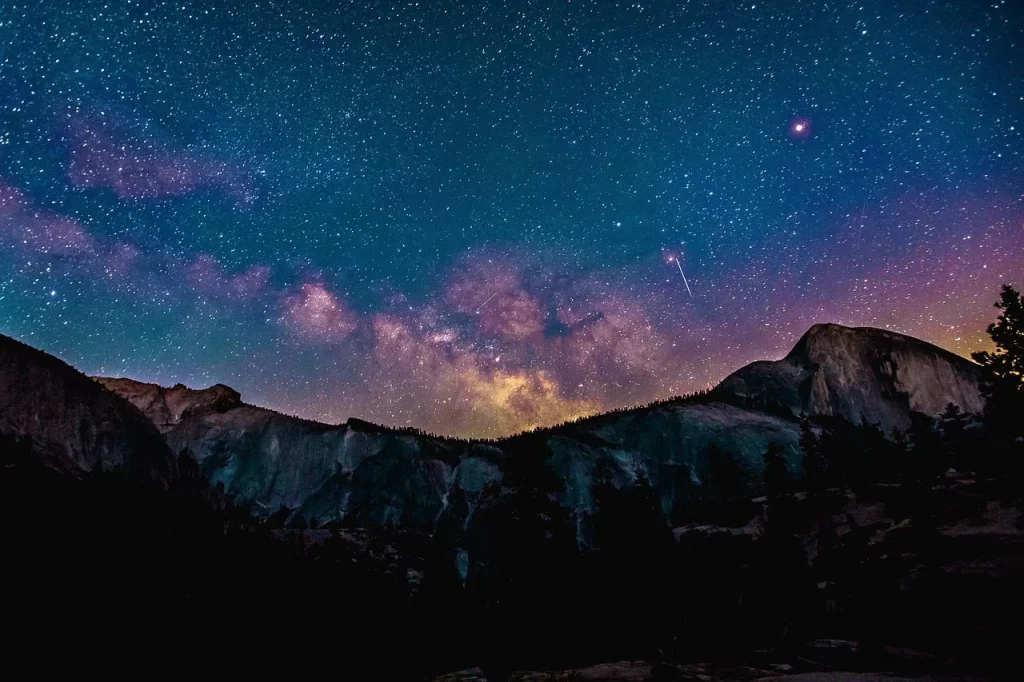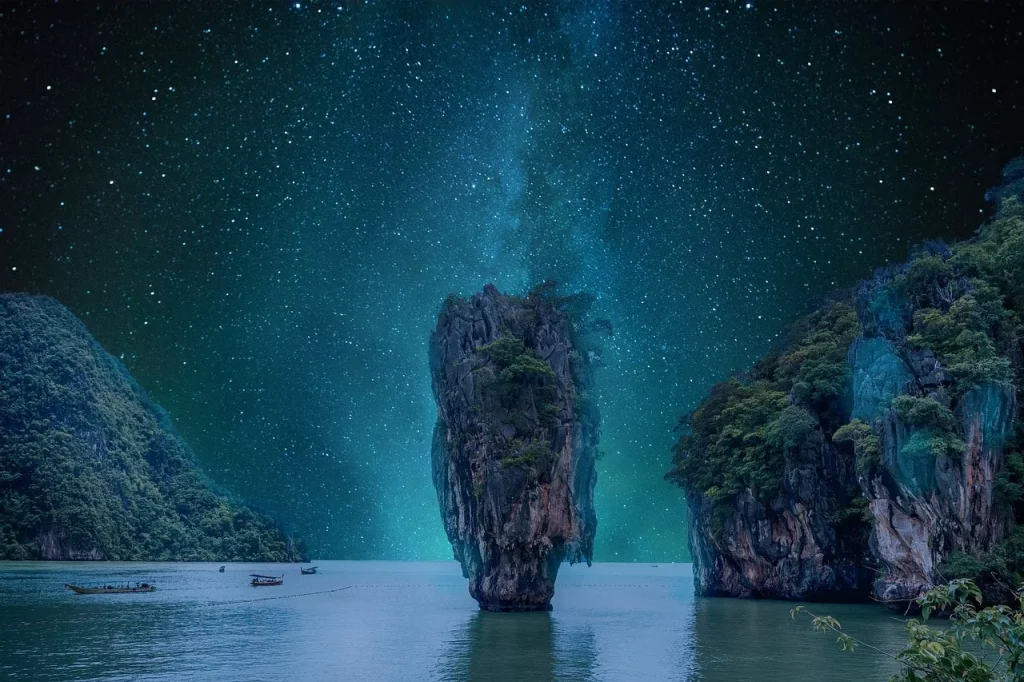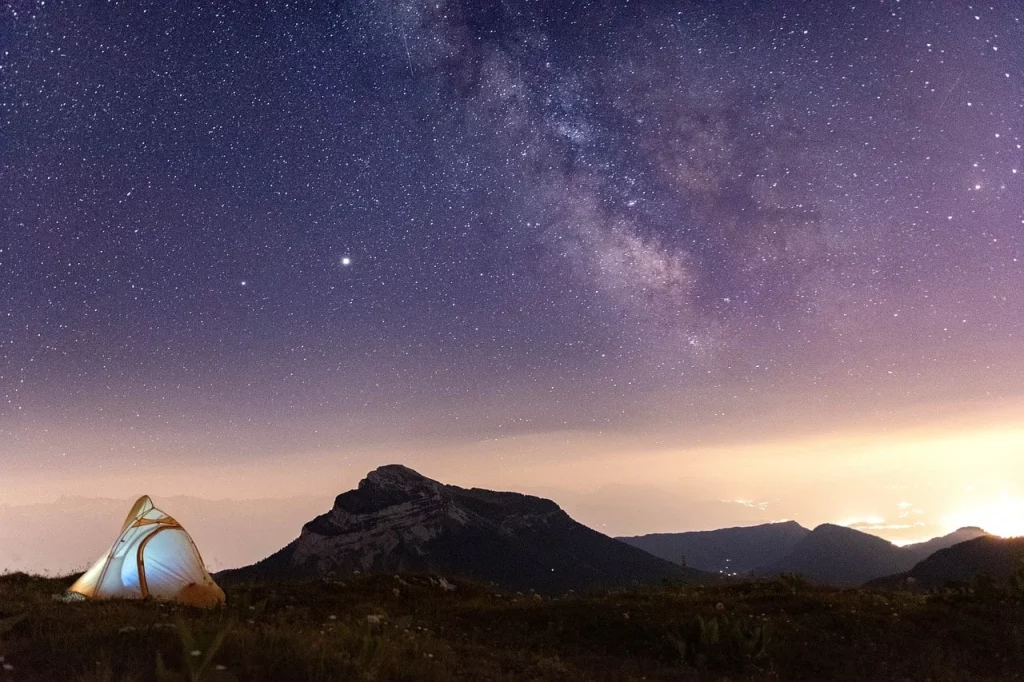Have you ever looked up at the night sky and marveled at the twinkling stars? Those distant specks of light that illuminate our night sky are not just points of light; they are vast, fiery balls of gas held together by their own gravity.
From ancient times, stars have guided explorers, inspired poets, and intrigued scientists. We’ll embark on a stellar journey, uncovering some fascinating facts about these celestial wonders. From their birth in nebulous gas clouds to their dramatic ends as supernovae or black holes, get ready to explore the life and secrets of stars.
When you look at the stars, you feel like you’re part of something bigger.
Neil deGrasse Tyson
Star Facts
Delve into the cosmos as we explore some enigmatic and awe-inspiring facts about stars. Read carefully, for a quiz awaits at the article’s conclusion, challenging you to prove your expertise in the stellar realm.
- The nearest one to Earth, apart from the Sun, is Proxima Centauri, located 4.24 light-years away.
- A single teaspoon of a neutron star would weigh about 6 billion tons on Earth.
- Some are almost as old as the universe, with the oldest known being about 13.8 billion years old.
- There are stars that orbit black holes at speeds so fast that they complete a revolution in just a few hours.
- Hypernovas, which are extremely energetic explosions, can outshine an entire galaxy for a short period of time.
- The color of a star indicates its temperature, with blue being the hottest and red being the coolest.
- Binary or double star systems, where two stars orbit each other, are more common than solitary stars.
- Some can create elements up to iron on the periodic table through nuclear fusion.
- Wolf-Rayet stars are known for their strong winds, which blow off their outer layers.
- Neutron stars can spin at a rate of up to 600 rotations per second.
- Magnetars, a type of neutron star, have the strongest magnetic fields in the universe.
- There are stars that eat planets, stripping them of gases or completely engulfing them.
- Vampire stars rejuvenate themselves by siphoning material from a companion star.

- Quasi-stars, theorized to exist in the early universe, were powered by black holes at their centers.
- The Milky Way is estimated to contain over 100 billion stars.
- Some can pulsate in size and brightness, known as Cepheid variables, used to measure cosmic distances.
- Supergiant stars can have diameters a thousand times greater than the Sun.
- Thorne-Żytkow objects are a hypothetical type of star with a neutron star at its core.
- Stars form in nebulae, giant clouds of gas and dust in space.
- Planetary nebulae are created when stars like the Sun expel their outer layers at the end of their lives.
- Some are part of moving groups, traveling through space with a common origin and velocity.
- The speed of sound on a neutron star would be around one-third the speed of light.
- White dwarfs, the remnants of stars like our sun, can crystallize into giant cosmic diamonds.
- Starquakes, similar to earthquakes, can occur on neutron stars, releasing immense amounts of energy.
- Population III stars are the first generation of stars, formed from pure hydrogen and helium.
- Circumstellar disks, made of gas and dust, can form planets around young stars.
- Brown dwarfs are ‘failed’ stars, lacking the mass to sustain nuclear fusion of hydrogen.
- Zombie stars result from a white dwarf drawing in too much material from a companion and undergoing a partial explosion.

- Some can have weather systems, including storms and cloud patterns.
- Blue stragglers appear younger than they are, puzzling astronomers about their true age and formation process.
- Stellar collisions are rare but can result in the creation of new stars or the emission of intense radiation.
- The first exoplanet discovered orbiting a sun-like star was in 1995.
- Variable stars change brightness, providing critical data on stellar dynamics and evolution.
- Protostars are the embryonic phase in a star’s life cycle, glowing from the heat of gravitational contraction.
- Kilonovas occur from the merger of two neutron stars, scattering heavy elements into space.
- The Hertzsprung-Russell diagram categorizes stars based on their brightness and temperature.
- The Chandrasekhar limit is the maximum mass a white dwarf can have before collapsing into a neutron star or black hole.
- Stars in globular clusters can be as old as the galaxy itself, offering insights into the universe’s early days.

- Dark nebulae are so dense that they block the light from stars behind them, creating voids in the night sky.
- The sun moves through the Milky Way at a speed of about 220 kilometers per second.
- Star formation is a balance of gravitational forces and thermal energy, with clouds collapsing under their own weight.
- Stars’ magnetic fields can influence their rotation, solar flares, and the formation of sunspots.
- T Tauri stars are young, pre-main sequence stars undergoing rapid changes.
- Algol variables, also known as “demon stars,” are eclipsing binary stars with dramatic brightness dips.
- Stellar nurseries, like the Orion Nebula, can contain thousands of young stars.
- Helium flashes occur in the cores of aging stars, leading to sudden increases in brightness.
- Asymptotic giant branch stars are in a late phase of stellar evolution, characterized by a dual shell-burning process.
- The Pillars of Creation, part of the Eagle Nebula, is a region of active star formation.
- Stellar wind is the flow of particles emitted by stars, influencing their surroundings and evolution.
- Gamma-ray bursts can be the most energetic events in the universe, often associated with massive stars collapsing.
Star Myths

As we transition from the facts about stars, let’s embark on a journey to dispel the myths. It’s time to distinguish fact from fiction.
- Twinkling Stars are Close to Earth
The twinkling of stars, known as scintillation, is caused by the Earth’s atmosphere distorting the light from the stars as it reaches our eyes. This effect is not indicative of a star’s proximity to Earth but rather of atmospheric conditions. - Shooting Stars are Stars Falling from the Sky
What is often perceived as “shooting stars” are actually meteoroids entering Earth’s atmosphere and burning up, creating bright streaks in the sky. These are not stars, but small space debris. - Stars are White
They come in a variety of colors, including red, orange, yellow, blue, and white, depending on their temperature. Cooler stars appear red, while hotter stars can appear blue or white. - All Stars are Sun-Like
They vary greatly in size, temperature, and type. While our Sun is a relatively average-sized yellow dwarf, there are much larger red giants and smaller red dwarfs, among other types. - The North Star is the Brightest Star in the Sky
Polaris is actually not the brightest star in the sky; it is simply well-known for its almost fixed position directly above the North Pole. Sirius, also known as the Dog Star, holds the title of the brightest star in the night sky.
No products found.
Star Quotes

Since the dawn of human history, we have looked up at the stars, mesmerized by their celestial dance. As Carl Sagan eloquently stated, “We are made of star-stuff.” Let’s explore how writers and thinkers have captured the essence of these celestial wonders through their words.
We are all in the gutter, but some of us are looking at the stars.
Oscar Wilde
Oscar Wilde, the famous playwright, highlights the importance of hope and aspiration despite our current circumstances.
Look up at the stars and not down at your feet. Try to make sense of what you see, and wonder about what makes the universe exist. Be curious.
Stephen Hawking
Stephen Hawking, a renowned physicist, encourages curiosity and a broader perspective on our place in the universe.
There wouldn’t be a sky full of stars if we were all meant to wish on the same one.
Frances Clark
Frances Clark, an author, reminds us of the uniqueness of each individual’s dreams and aspirations.
For my part I know nothing with any certainty, but the sight of the stars makes me dream.
Vincent Van Gogh
Vincent Van Gogh, the celebrated painter, shares how the stars inspire him to dream beyond the confines of certainty.
The stars are the landmarks of the universe.
Sir John Frederick William Herschel
Sir John Herschel, a mathematician, astronomer, and chemist, underscores the stars’ role in navigation and understanding our place in the universe.
Star FAQ

Let’s continue with the FAQ section. Read carefully these answers because the quiz is just ahead.
- Why do stars shine?
They shine because of the nuclear reactions happening in their cores. Imagine the core of a star as a gigantic nuclear power plant. This plant fuses hydrogen atoms into helium under extreme temperatures and pressures, releasing a tremendous amount of energy in the form of light and heat. - How are stars formed?
They are born in vast clouds of gas and dust known as nebulae. Think of these nebulae as cosmic nurseries. Over time, gravity pulls the gas and dust together into clumps. As these clumps gather more material, they grow denser and hotter. When the temperature and pressure in the core of a clump become high enough, nuclear fusion ignites, giving birth to a new star. - Are stars bigger than planets?
Yes, they are typically much bigger than planets. Our Sun, which is a pretty average-sized star, can fit about 1.3 million Earths inside it! While there are some enormous planets out there, even the largest known planets are dwarfed by stars. - Why do stars have different colors?
The color of a star is primarily determined by its temperature. Cooler stars emit more red light and thus appear redder, while hotter stars emit more blue light, making them appear bluer. It’s similar to heating a metal rod; as it gets hotter, its color changes from red to white to blue. - Can stars have rings?
While stars themselves don’t have rings in the way planets like Saturn do, they can have disk-like structures around them. These disks are made of gas, dust, and debris, and they can sometimes be seen around young stars, where planets are forming, or around old stars that have expelled some of their material.
No products found.
Star Trivia

Welcome to the Stellar Quiz, where your knowledge of the cosmos will be tested! Warning: Fail to answer correctly, and you might find your social status demoted to Pluto—no longer a planet, just a cold, distant memory.
Star Merch
If you are a true stars fan, then you definitely need to check out our merchandise. You can find T-shirts, hoodies, mugs, and tote bags for your favorite designs. Feel free to check out all the other designs in our shop.
Conclusion
Our journey through space reveals that stars are the architects of the universe, sculpting galaxies and seeding the potential for life as we know it. They illuminate the darkest corners of the universe, guiding explorers and serving as the lighthouses of the cosmos.
As we conclude our stellar exploration, remember that every time you look up at the night sky, you are looking into the past, witnessing the light of stars from years, centuries, or even millennia ago. Till next time, stay curious. Cheers.


